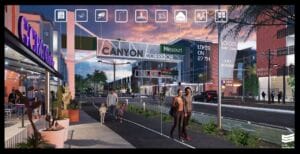Imagine Arizona as the energy hub of the Southwest — where major regional transmission lines tie into infrastructure in the state and serve a growing regional demand for energy. Arizona would be a place where an increasing percentage of jobs are related to the energy industry, whether in manufacturing, generation, transmission, energy efficiency, service or technology innovation. Many of these jobs would be higher-wage jobs requiring a skilled labor force fed by Arizona’s schools and universities. Arizona could be a hub of energy-sector jobs, with factories making equipment for the industry and power plants shipping electricity to neighboring states via new power lines, all contributing to a better economy.
That is the essence of the Arizona Energy Consortium’s Energy Roadmap, which the group hopes with be a catalyst for the state’s energy industry in the same way Arizona’s Bioscience Roadmap helped the state increase bioscience jobs by 41 percent and helped increase the number of bioscience establishments by 27 percent during its 10-year plan.
“It was important to create this document to give the energy industry a unified voice and direction,” said said Michelle De Blasi, co-chair of the AEC and a shareholder at Greenberg Traurig. “The energy industry is going to be here forever. We are always going to need energy. So the Roadmap was designed to make the industry better for everyone — consumers, developers, legislators. So it was critical that we get it right.”
This is the vision the Roadmap hopes to realize over the next decade: Arizona is the energy hub of the Southwest, with a diverse energy mix supporting reliable transmission, a strong base of manufacturing facilities, increased numbers of higher wage jobs, and world-class research institutions, resulting in increased economic development for the state and region.
Once that vision is realized, De Blasi said the state can expect to reap these benefits:
• Enhanced job creation and higher-wage jobs within Arizona
• Increased state economic revenue
• Enhanced energy export potential
• Heightened energy self-sufficiency and national and state security
• Increased transmission reliability
• Continued low cost energy
“This Roadmap is going to help Arizona be looked at differently from outside its borders,” said Chris Davey, co-chair with De Blasi of the AEC and president of EnviroMission, which is developing a solar tower in Western Arizona. “The Roadmap will create a sense of certainty, which appeals to the finance community. So when they are looking to invest, that certainty creates a more attractive environment for developers and investors.”
Davey and De Blasi said they will be rolling out the Roadmap this year, presenting it to groups throughout the state. For more information on the Roadmap, visit aztechcouncil.org.
ROADMAP CONTRIBUTORS
Arizona Commerce Authority
Arizona Governor’s Office of Energy Policy
Arizona Public Service
Bridge Strategy Group
Brownstein Hyatt Farber Schreck
City of Mesa, the Office of the Mayor
Cleantech Open
Dircks
DIRTT
DMB Associates
Energy Services Coalition
EnviroMission
Faithful+Gould
Greater Phoenix Economic Council
Greenberg Traurig
The Green Chamber – Greater Phoenix
Golder Associates
Hensel Phelps
Ikoloji
Institute for Tribal Environmental Professionals
J.D. Porter & Associates
Kolbe Connect
Matthew McDonnell
Ormond Group, LLC
RG Schmelzer, Inc.
Salt River Project
Stream Energy
Tucson Electric Power
Valley Forward
Valley Partnership




